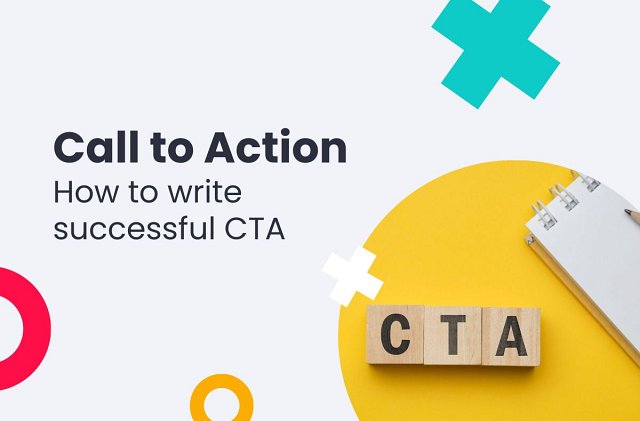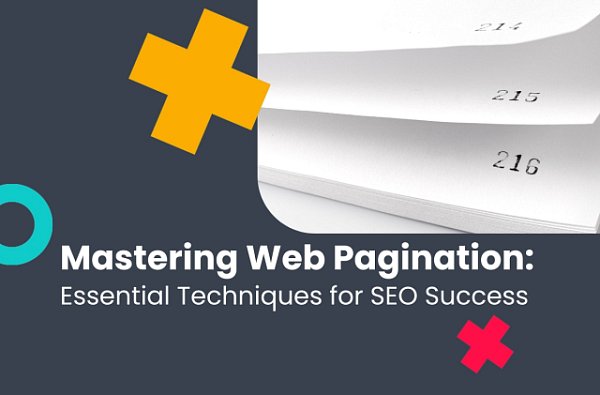Call to Action: How to write successful CTA
(12 min. read)

Table of Contents
- What is a Call to Action (CTA)?
- Types of Call to Action and when to choose each one
- Creating effective CTAs
- Examples of compelling CTAs
- Call to Action in Digital Marketing
- Measuring the effectiveness of Call to Action
- A/
B testing of CTA - What to avoid when writing CTAs?
What is a Call to Action (CTA)?
CTAs are most often short phrases or sentences that prompt your audience to take a specific action in, whether as part of a website, ad, or digital content, but can also take other forms, including buttons, images, and other web page elements. A Call to Action can be found in all types of marketing materials, from website copy and blog posts to social media ads and email campaigns.
By now, you have definitely seen many “Buy Now” or “Subscribe” signs all over the internet - these Call to Actions are the most often used way of directing your audience to whatever action you want them to take. Usually, these phrases hide a link that redirects the user to a webpage where they can begin the conversion process.
The importance of CTAs in advertising
Call to Action is an extremely important element of any webpage or other digital medium created with intent to persuade the viewer. Without it, many users will be left clueless as to what they should do next, and will end up simply leaving the page. Imagine if you saw a TV advertisement for a service that you’re in need of, but with no number provided to call - that’s what digital ads are without a Call to Action.
Without a strong Call to Action, your audience will lose interest and move on to something else. CTAs can be the driving force behind conversions, and will help guide your audience through the buyer’s journey. Selling products, promoting your services, or simply trying to get more engagement on your social media posts can all be made much more effective with a strong Call to Action.
In fact, studies have shown that CTAs effectively increase click-through rates, conversions, and engagement. According to HubSpot a personalized Call to Action on a website can increase conversions by as much as 202%, showing that CTAs are an essential part of any successful advertising strategy.
Types of Call to Action and when to choose each one
Depending on the specifics of your marketing campaign, you’ll be better off choosing a specific type of Call to Action. For example, if your goal is to get your audience to subscribe to your newsletter, you can use a submission form CTA that shows as a pop-up or a slide-on on the website to make the process quick and easy for the users. Forms are also a great way to collect information from your audience.
Buttons are one of the most popular choices for a Call to Action because they are eye-catching and easy to click. They work well on landing pages and on paid advertisements, and pretty much everywhere where you want to direct your audience to take a very specific action, like “Buy Now” or “Sign Up”.
Images can also be used as a Call to Action - especially on social media platforms like Instagram. Many platforms allow users to start the purchase journey by clicking an image, making them effective at promoting specific products or services. Image-based CTAs can also be found as banners on websites.
Text-based Call to Action are simple and straightforward and work well in a range of contexts, including blog posts and email campaigns. The text often features persuasive language that aims to persuade the reader into taking a desired action, and part of it usually includes a link that redirects users to a target webpage.
When choosing a type of CTA to use, consider the platform you’re designing the Call to Action for, as well as the goal of your campaign and the preferences of your audience. By choosing the right type of CTA, you can increase your chances of driving conversions, creating an emotional connection with your target audience, boosting engagement, and realizing your campaign goals.
Creating effective CTAs
Making an effective CTA requires effort and careful planning, and is much more than just writing a sentence and adding a hyperlink. Businesses need to consider their target audience, desired action, and overall design of the CTA. Let’s go over a few best practices that can help you improve your CTAs.
Always remember that CTAs need to communicate their message clearly and concisely. Use clear and specific language that directly refers to the action you want your audience to take, and make sure to adjust the length to the type of CTA you’re using (the text for a button will be much shorter than in the case of a form, for example).
Adding a sense of urgency to your Call to Action can help motivate your audience to take the desired action. If you’re selling a product, using language that creates urgency, such as “Limited offer” or “Act now” can help make the Call to Action more effective. The language, overall, should always be action-oriented. Avoid using passive language or phrases that can be interpreted as optional.
CTAs should also be visually appealing. Make your Call to Action stand out visually on the page or other marketing material by adding contrasting colors, bold fonts, and other design elements to make it eye-catching and aesthetically pleasing at the same time.
Creating effective CTAs takes time and practice, and it always involves lots of trial and error. Testing and iterating can be effective at finding out which techniques work for your audience - more on that later in the article.
Examples of compelling CTAs
Messages like “Download Now” or “Get For Free” are frequently used by brands from all industries, since they’re straight-to-the-point and have a subconscious effect on the reader, which is also connected with their visual appeal. These phrases themselves are not subject to copyright protection, but the way they are presented in a particular context might. Treat them as an inspiration at most.
Depending on your needs, consider using one of these short-form CTAs for buttons and other website elements:
- Buy now
- Download
- Sign up for free
- Book a demo
- Subscribe now
- Get started today
- Join the community
- Claim your discount
- Start your free trial
- Limited time offer
- Get a free quote
- …and so on!
In case of short messages like that, the visual side is more important than the text alone. For example, while not many users would click on a bare text saying “Buy Now”, a lot more users might consider clicking if they’re presented with a nice-looking button, accompanied by relevant information in a nice presentation. All the parts must come together for the Call to Action to work effectively.
For longer CTAs, you’ll need to customize the message to fit your specific product or service, as well as your target audience. You’ll usually find such messages at the bottom of blog posts or sponsored articles, often with a link redirecting users to a target website. Personalization is important for all CTAs - creating a unique message might end up swaying more users than a generic “Buy now”.
Call to Action in Digital Marketing
While you might notice Call to Actions in all of advertising, including TV advertisements, billboards, and so on, they are particularly important in digital marketing, where they make the difference between a visitor staying on your website or leaving. With so much competition online, it’s vital to have CTAs that stand out and effectively persuade users to take action. When designing digital marketing materials, you should always focus on creating an effective Call to Action to lead the audience on their buyer’s journey.
CTAs in email marketing
Email marketing campaigns almost all feature a CTA message, encouraging recipients to take a desired action, such as visiting a website, signing up for a free trial, or making a purchase. A new user welcome email might include a CTA that leads the receiver to subscribe to a newsletter, or an email ad might contain a set of product images with additional copy, which after clicking redirect users to a product page.
When designing your CTA, think about the overall look of the email, and try to place it prominently and use compelling language to encourage clicks.
Writing effective CTAs for social media
Social media platforms are a great place to use CTAs, as they provide a direct link between your business and potential customers. When writing effective CTAs for social media, consider the context of the platform and the audience you’re targeting.
For example, on Twitter, where character limits are strict, short and snappy CTAs can be effective, while on Instagram, it might be worth utilizing in-app features like swiping, with messages like “Swipe Up to Learn More”. When posting on Facebook, remember to include a CTA both in the post text and the image.
Regardless of platform, make sure your CTA is clear, specific, and action-oriented first and foremost.
Call to Action and SEO
While CTAs are primarily used to drive conversions, they also play a role in SEO. For example, including a strong CTA in your meta title and meta description can encourage users to click through to your website from search engine results pages (SERPs). When used in a website’s content, CTAs can also increase the time users spend on your site, reducing bounce rates and increasing the chances of them engaging with your business.
Using CTAs in paid advertisements
CTAs are essential in paid advertising, since they provide a clear path for potential customers to take action. Whether you’re running a campaign on Google Ads, social media, or display ads, always use clear and precise CTAs that align with the user’s intent and provide a clear value proposition.
CTAs for landing pages
A huge reason behind low-conversion landing pages are weak CTAs that don’t properly lead customers further on the path. CTAs made for use on landing pages should be sharp and well-designed, highly personalized to match your brand, and located in a prominent position on the page. The visual aspect is perhaps the most important here for most businesses, since a landing page is often the place where a viewer is converted into a customer.
Measuring the effectiveness of Call to Action
It’s good to know all the tips and techniques when writing your CTAs - but how can you tell whether they are actually realizing their purpose?
Measuring the effectiveness of your CTAs is crucial to understanding whether they need improvement or not. The Click-Through-Rate (CTR) is one of the key metrics used to track CTAs, and it measures the percentage of users who clicked on your CTA compared to the total number of impressions. You can also track conversion rate, which measures the percentage of users who actually completed the desired action after viewing the CTA, as well as bounce rates (the percentage of visitors who only view one page on your site and leave).
A/
A/
When performing A/
What to avoid when writing CTAs?
Now that you know what you should do when writing your CTAs to drive conversions and increase engagement, let’s focus on what you shouldn’t do.
First of all, avoid using vague or unclear language that doesn’t communicate the intended action well. CTAs only allow a very limited number of characters, so make sure each one counts. Secondly, don’t rely on generic or clichéd phrases too much that don’t stand out from other CTAs, like “Click Here” - your audience definitely won’t be too impressed, unless the visual appeal is really stunning.
Remember to avoid unrealistic or exaggerated claims about your product or service, as this can erode trust and credibility with your audience and even potentially cause legal issues. Using too many CTAs on a single page should also be avoided, since this can confuse and overwhelm the user, and might be received as very pushy advertising. Be mindful of the design and placement of your CTAs, as poor visibility or cluttered page layout can reduce their effectiveness and render them hard to find for users.
Today, we’ve explored the importance of Call to Actions (CTAs) in digital advertising and beyond, discussing various types of CTAs and when to use them. We’ve gone through tips for creating effective CTAs across different digital channels, including email marketing, social media, SEO, and paid advertising. We’ve also highlighted the importance of measuring the effectiveness of your CTAs, as well as constant testing and avoiding common mistakes when designing them. By following these best practices and tailoring your CTAs to your specific target audience, you can drive more conversions and achieve better results from your marketing efforts - don’t neglect your CTAs!


